
It is time to take a closer look at those elements of the garden that give it a unique Chinese flavor, forms the actual style.
The role and importance of water in the garden
Mandatory belonging of the Chinese garden-the noise of falling water, because nothing else so calms, does not help to achieve inner harmony. Water is an element that appears in the garden (as well as in nature) in two qualities: it is the mirror of the world, the embodiment of peace, and the sign of eternal movement, fluidity, constant change. The personification of the first quality is a lake or a pond with standing water; the second quality is represented by a river, stream, waterfall.
In a thoughtful and balanced garden it is desirable to have both “live” water (waterfall) and water surface (pond with calm, still water). We should not forget about the practical purpose of garden ponds: they took water for household needs, their banks served as places for picnics and walks.
Reservoirs, especially man-made, do not have high banks and lining. Imperial pavilions on the Islands were built so that the perimeter of the Foundation of the building as close as possible to the size of the island. This technique achieved the impression that they “grow” right out of the water.
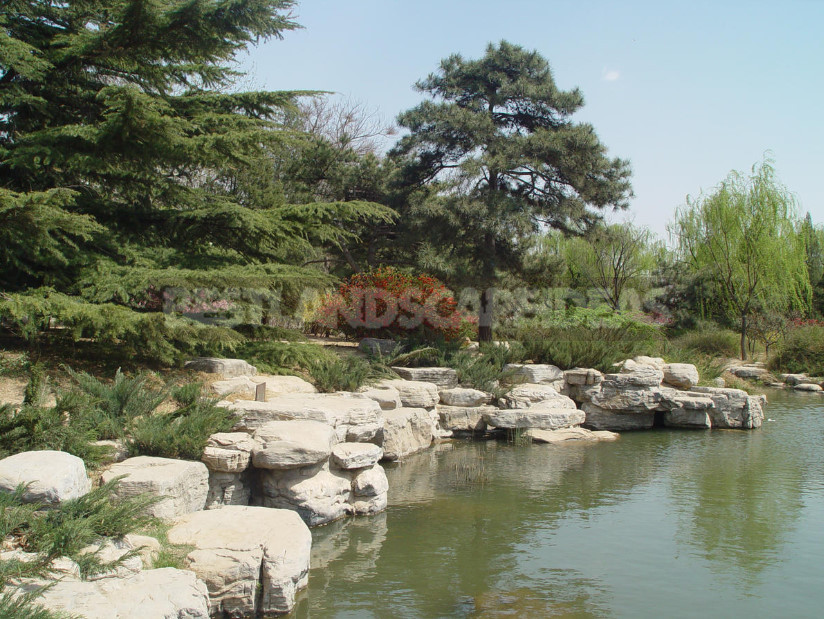
A special world of reflections is created. Garden paths and paths often pass over the water. A significant part of the space of reservoirs is occupied by Nymphaeas and lotuses.
Living water-waterfalls. They can be created elementary – just properly organized drain from the roof. In China, the roofs of the pavilions make it so that rain water falls from them like a real waterfall. And in our latitudes there is too much water, so we pay little attention to it. But if you think about it, we also like to sit on the summer terrace in the rain and listen to the sound of falling water. And in our gardens, under our roofs, you can always create a pond in which water will be collected for irrigation, while performing the role of the water surface.
Stones as a landscape element
Stone-a complex material that combines natural and anthropogenic qualities: it was created by nature, but can be processed by man. In the Chinese garden “stone balances the natural elements of wood and water and signs of human presence – architectural structures”. In their garden tradition stone is “pure energy of heaven and earth”. Therefore, the stone in the garden is given an important place.
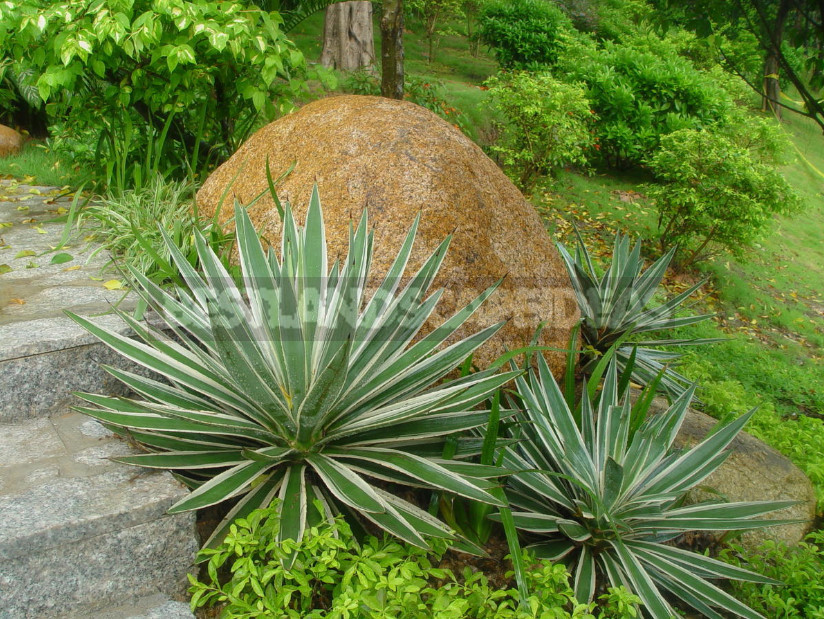
For expression of compositions of garden and use the artificial hills made of stones. They can be created even without the use of plants. One of the Chinese philosophers on this occasion said: “Most of all I do not like when they build high hills out of stones. Coming up with complex stone piles is the occupation of low artisans, there is no simplicity and naturalness. It is much better to put a large stone among the rare trees and elegant bamboo trees, and next to it to pour a mound, so that you can climb it and look from a height, as if there is untouched nature around.”
Fences
Gardens in China decided to fence, because they-a symbol of Paradise on Earth. The fence allocates a special space of the garden and makes it a”world in the world”. From a practical point of view, this is the border of the estate or land holdings. The fence is created as part of the surrounding landscape, it is always built in such a way as not to destroy the terrain, but to follow its folds, running up and down the slopes of the hills like a “writhing dragon”.
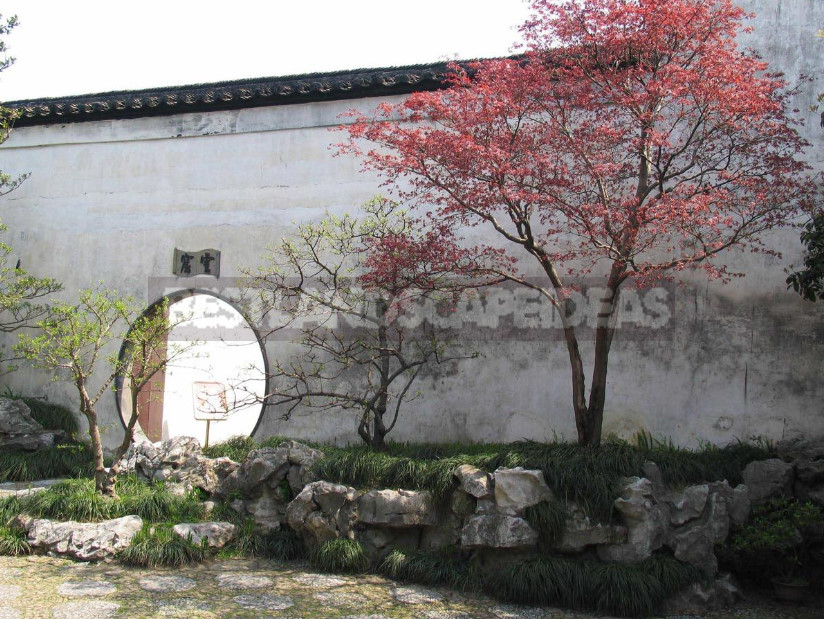
The wall of the Chinese garden serves both symbolic and aesthetic purposes, even if it just visually separates the garden. As such, the fence itself has to ” contemplate the shadows cast by flowers and bamboo on a moonlit night.” Often on the wall leave an empty space where friends or guests of honor can personally draw the inscription.
Gate
Neither the city nor the garden can do without a gate. They are always richly decorated, have a symbolic inscription. Gates can be even without walls or fences, because they themselves serve as a symbol, a sign.
Pavilions
A Chinese garden or Park is impossible without architectural structures that denote a person. They can be very different: pavilions and gazebos, courtyards and tiled galleries, houses for tea and music, offices and towers, residential buildings and terraces, allowing you to admire the Park in any weather.
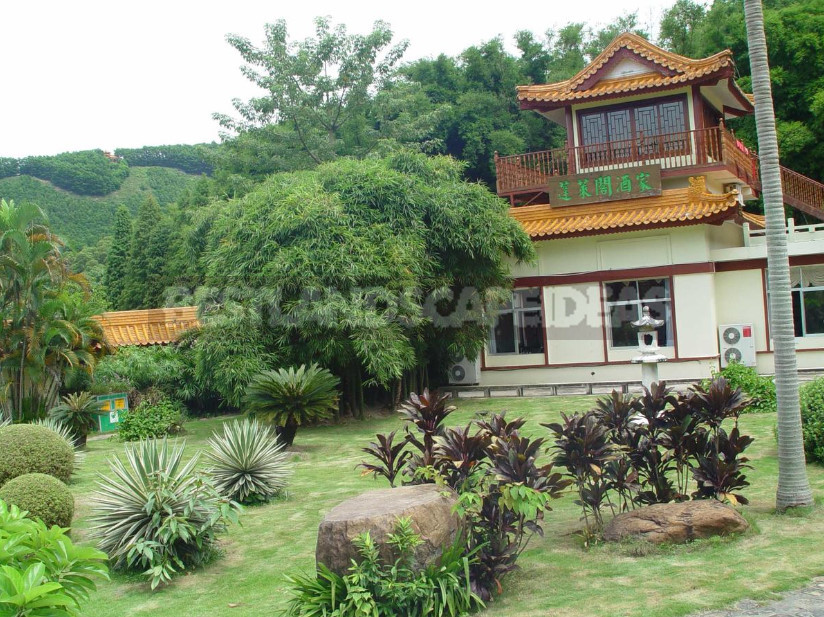
Everything is subject to the idea of contemplation from anywhere in the garden. It is always important that created by man was in unity with nature, in accordance with it, with the landscape.
The aisles and Windows
In China, it is customary to give openings and passages in fences, wickets, in garden structures the shape of a circle, oval, hexagon or octagon, pear-shaped or gourd shape, and so on. Initially, given the peculiarities of national life, closed courtyards, Windows in the walls served as a”window to the world.” In the palaces they were most often painted so that no one could see the inner life from the outside. But then in the gardens they are transformed into signs of the cosmic cycle of change. Their main task is to convey the connection between the outer and inner spaces.
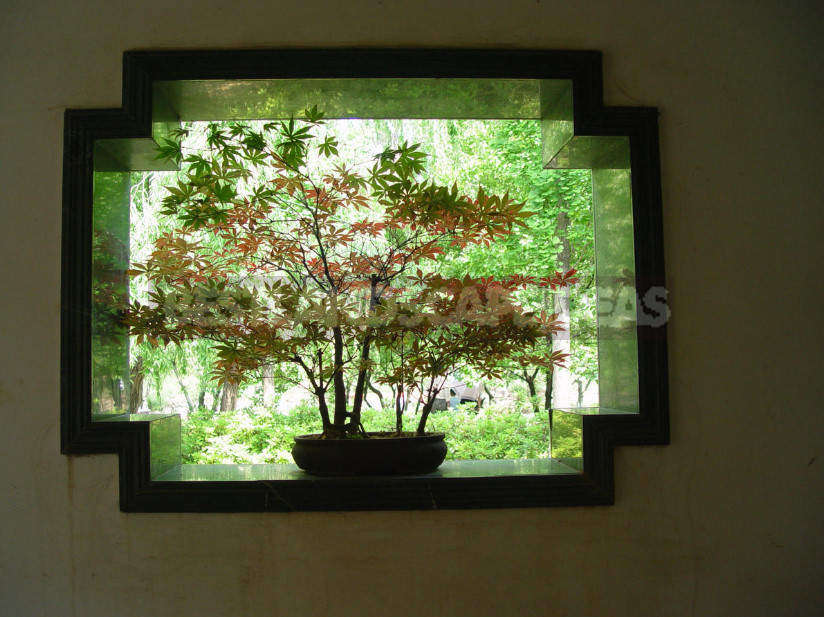
The window each time opens a picturesque view or even a series of views, presenting a kind of “living picture”. The house opens to the garden through the window, and the garden also through the window enters the house. Different form of openings and Windows – different energy, but also the diversity of the world, both internal and external.
Inscriptions, signs, hieroglyphs
Wherever you come, in the Park or in the garden you will meet stones or specially treated tree trunks with inscriptions. This particular direction in landscape art, associated with literature, and with a special perception of the garden — or rather, one or another of its exposure. Inscriptions-an indispensable accessory of each Chinese garden and house.

Moreover, the inscriptions can be placed on several stones placed in different parts of the garden, and the sayings of different authors can be located nearby. Inscriptions are embossed on rocks, stones and special stone pillars.
The hieroglyph, a sign in the garden landscape complements and enriches the sensual perception of the Chinese, highlights the place as significant, important. It can be inscribed not only on the stone, but also on the tree trunk, on the wall of the garden (structure). This is a symbol, and it must be good, kind, useful, to bring happiness and joy, peace of mind and balance.
Plants
The Chinese garden is always full of various plants. The wealthier the owner, the richer the floristic composition of his land. It includes a large number of flowering, decorative-deciduous deciduous and evergreen trees and shrubs, as well as coniferous plants. Certainly there are small inclusions of fruit trees, grown not only for the sake of beautiful flowering, but also for the sake of edible fruits, as well as medicinal plants.
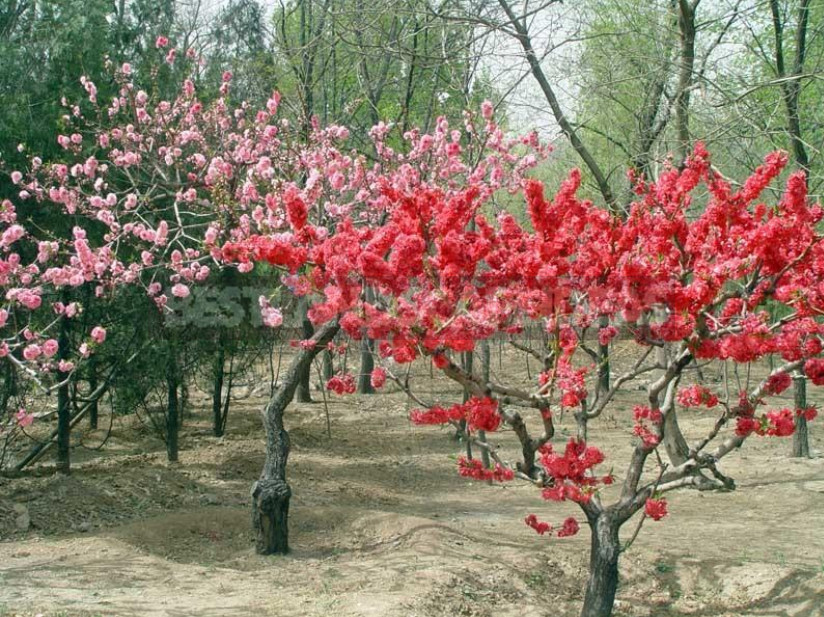
Distribute in places and the degree of ” love ” and preferences of certain cultures in the Chinese garden – a thankless task. It all depends on its location, welfare and social status of the owner, many other factors. But there are some plants-symbols, without which there is, perhaps, no garden.
Most often the list is headed by coniferous, personifying longevity, eternity, nobility. In the Chinese garden there are indispensable “trees of happiness”. Woody plants necessarily are forming.
A special place in the gardens is given to roses. Here it should also be remembered that tea – hybrid roses-this is the original Chinese garden roses. Roses are planted in large groups, creating rosaries; along the paths; on trellises and so on.
Herbaceous plants are an integral part of the garden. Annual and biennial flowers-put in pots or planted in the ground; perennial placed in large groups, creating accent spots, balanced in color, the timing of flowering, decorative in autumn colors.
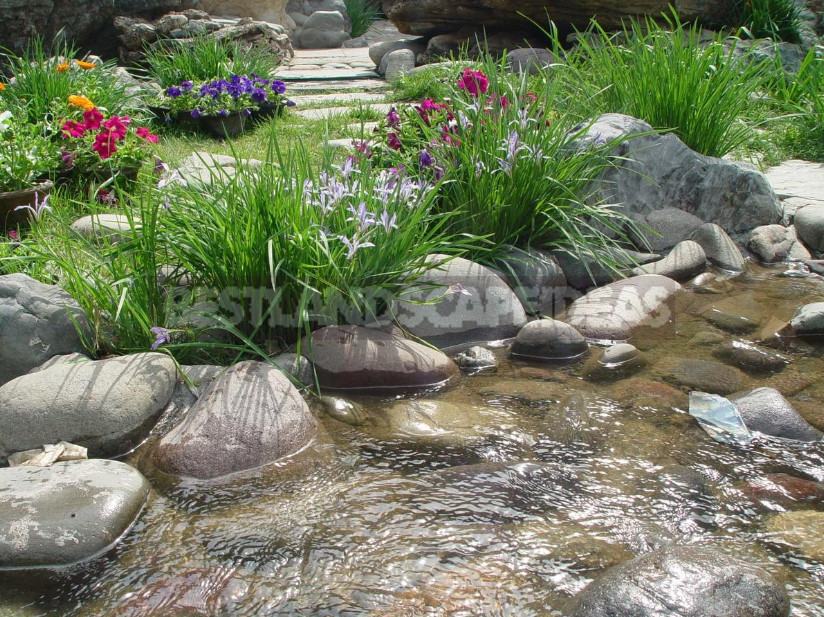
The most striking are multi-color mixborders of annuals (temporary compositions on the lawns), which create a mood in the garden before the leaves bloom on the trees or flowering trees. For reservoirs the main type-Lotus. Besides being a Buddhist symbol, it is also an important food plant.
The garden is sure to have corners designed to visit them at different times of the year. In winter you can enjoy coniferous, spring-peaches, plums, apples, almonds, summer – riot and variety of plants, autumn – bright colors of maples, aspens, apricot trees.
There is another feature of the Chinese garden – he does not know the vast grass lawns. And the fact is that formally allocated empty space is alien to Chinese aesthetic principles. Contemplation in the garden of precious plants has to raise noble feel.
The purpose of the man-made garden in China is not limited to showing the diversity of forms and richness of shades of flowering plants. Its most important purpose is to evoke the philosophical mood of the visitor, paying attention to the changing nature of life, and plants are the signs that determine the present moment, the situation, the mood.
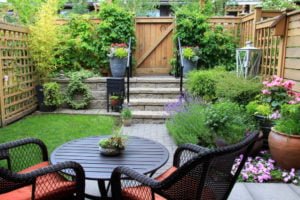



Leave a Reply